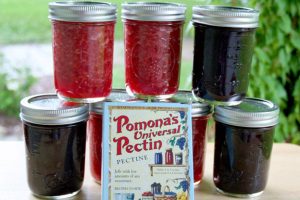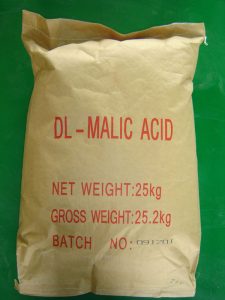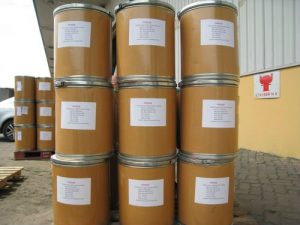Pectin E440 can be used in Food, Beverage, Pharmaceutical, Health & Personal care products, Agriculture/Animal Feed/Poultry.
Pectin E440 is used as a gelling agent, thickening agent and stabilizer in food such as in yogurt, confectionery and acid milk drinks, jams, jellies and bakery fillings. From the raw materials, generally there are two kinds of Pectins: Citrus pectin and Apple Pectin.
Pectin are polyoses which exist in the tissue of all terrestrial green plants. They are bonding materials in plants that combine water and plant cells.
High methoxyl pectin (high ester) with more than 50% of esterfication degree

Low methoxyl pectin (low ester) with less than 50% of esterfication degree

Pectin used in Jams and marmalades:
Jams and marmalades with a soluble solid content of at least 55% are the classic applications for high methyl pectin which guarantee excellent flavour release, low syneresis and fruity-sweet taste. High methyl pectin is the choice for recommended filling temperatures between 65 – 85°C. High methyl pectin E440 is a sensible alternative when gel transparency or colour of the pectin may influence the appearance of the finished product.
Pectin used in Confectionery:
The solid content of confectionery products, which is normally bet-ween 70% – 80%, together with a high acidity, can cause rapid or even an uncontrollable gelling speed if the wrong type of pectin is used.
Apple and citrus pectin contain different well balanced buffer systems to provide con-sistent setting properties and consistent gelling strength.
Special Pectin E440 are also available for extra low filling temperature.
Low methyl pectin E440 is recommended for fruit spreads with soluble content lower than 55%.
Pectin used in Dairy:
High methyl pectinE440 can stabilize acid protein systems by forming protective layers around the protein particles. This protein protection prevents serum or phase separation and casein aggregation at low pH values.
PectinE440 can also increase the viscosity and thus increase mouth feel and taste to acidified dairy beverages like drinkable yoghurts, fruit containing milks or fruit flavoured protein drinks. Fruit and milk are a refreshing combination that is perfect for a healthy and natural diet; Pectin is the combining element between.
Pectin used in Beverage:
PectinE440 in beverage applications cover many functions including cloud stabilisation, increasing mouthfeel and boosting soluble fibre.
For cloud stabilisation in fruit juice drinks and for adding a natural mouthfeel to low calorie fruit beverages, we recommend our range of viscosity standardised HM pectin types. They are standardised to constant physical and rheological properties and are available in different viscosities from apple and citrus origin.
In applications where you want to increase soluble fibre content, you have the choice of different low viscosity pectin types.
Pectin used in Bakery:
A shiny and attractive finish on all sorts of pastry and desserts or a smooth and tasty fruit filling is giving bakery products the special character. Pectins have functional properties which are optimal for these applications..
Glazes seal the surface and act at the same time as a flavour enhancer, colour and freshness preserver. For effective use, glazes must be fully transparent, easy to apply and have to have constant rheological properties.
LMA PECTIN E440 is low methyl amidated pectins and they are less calcium sensitive and require generally less calcium for optimal gelling. Even the fruit containing calcium or water containing calcium can be sufficient for optimal gelling conditions. LMA pectins are to a large extent very tolerant towards the calcium concentration for building up an optimal gel network. These pectins result in very smooth and elastic gel structures. Additional calcium normally is only needed if soluble solid content is lower than 40%. LMA are the only pectins which produce thermo reversible gels.
HM pectins E440 is high methyl composed of more than 50% of esterified galacturonic acid units. We offer a broad range of different DE from 50% to 78%. HM pectins are standardised either to specific setting temperatures, viscosities, calcium reactivity, protein stabilising capacity or specific buffer capacity. More information about these pectin types can also be found in our detailed application brochures.
In food and drinks |
|
Used in Confectionery
Used in Dairy foods
|
Used in Fruits & Vegetables
|
In Agriculture/Animal Feed/Poultry
PectinE440 can be used as preservatives in Agriculture/Animal Feed/Poultry.
In Health and Personal care
PectinE440 used as stabilizer in cosmetic and personal care products.





